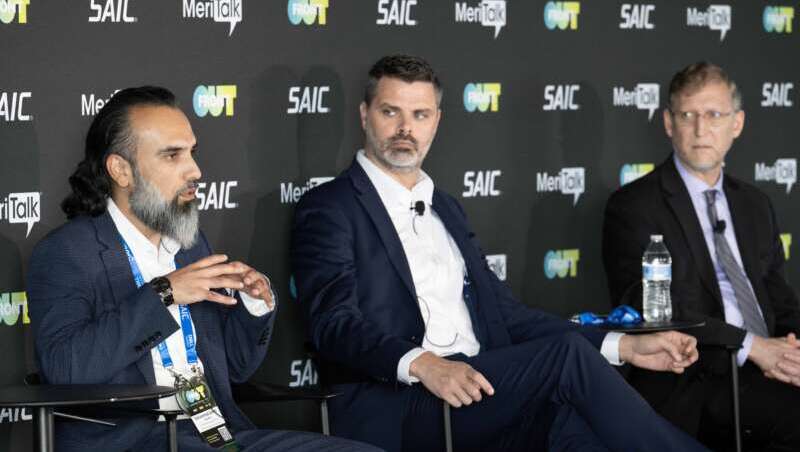
When embarking on a digital transformation journey to the cloud, tech experts on Tuesday afternoon recommended that the first step should be migrating all of the data into the cloud environment.
At the Oct. 29 SAIC OutFront 2024 conference – produced by MeriTalk – in Arlington, Va., Federal technology officials explained how tackling the data first helped them succeed in their cloud migration.
“We actually migrated all of the data into the cloud environment first, before we migrated any applications, and then we started refactoring them. [We] got a full ATO on the system and brought it up in production,” said Mason McDaniel, the chief technology officer (CTO) at the Bureau of Alcohol, Tobacco, Firearms and Explosives.
“As we then started migrating application by application, refactoring them, that data from those other schemas, those other tables, were already there that they could code to – with real data to test and verify all of those interconnections and interdependencies,” McDaniel said. “We found out handling that at that data-level first, and getting it all there, was really one of the key things that helped us to ultimately succeed in getting essentially all of our systems over into the cloud environment.”
McDaniel explained that migrating to the cloud was a “long road,” but it helped to break the process down into digestible pieces, and not try to do “everything at once.”
Similarly, Mohammed Sohail Chaudhry, the CTO at the Food and Drug Administration (FDA), said that a slow, controlled speed was also key to the FDA’s cloud migration.
“If we don’t stop doing business the way it was done, we are probably creating one solution, but unintentionally creating two more problems for us to deal with in the coming years,” Chaudhry explained. “So, that’s the first thing that we really have to acknowledge and pause in doing.”
“The data components are extremely important to look at and going down to the basics helps,” he added.
Likewise, Andy Henson, the senior vice president of the Digital Innovation Factory at SAIC, said that SAIC also advises people to get to the basics of their data, stressing that “the data problem, is primarily a human problem.”
“If you look at it as a human problem or people problem, then you can start two things,” Henson said, adding, “It’s going to sound silly, but look at the data and usage of that data with a little bit of a little less technical lens … but also with a little bit of empathy of like, how would they consume this information? Why would they consume this information?”
“So, that’s how we try to approach that problem with our clients,” Henson said. “Because if you don’t, then it inherently becomes, ‘Hey, we have this really specific technical solution that no one knows how to use and no one can use.’ It doesn’t actually solve the problem.”
